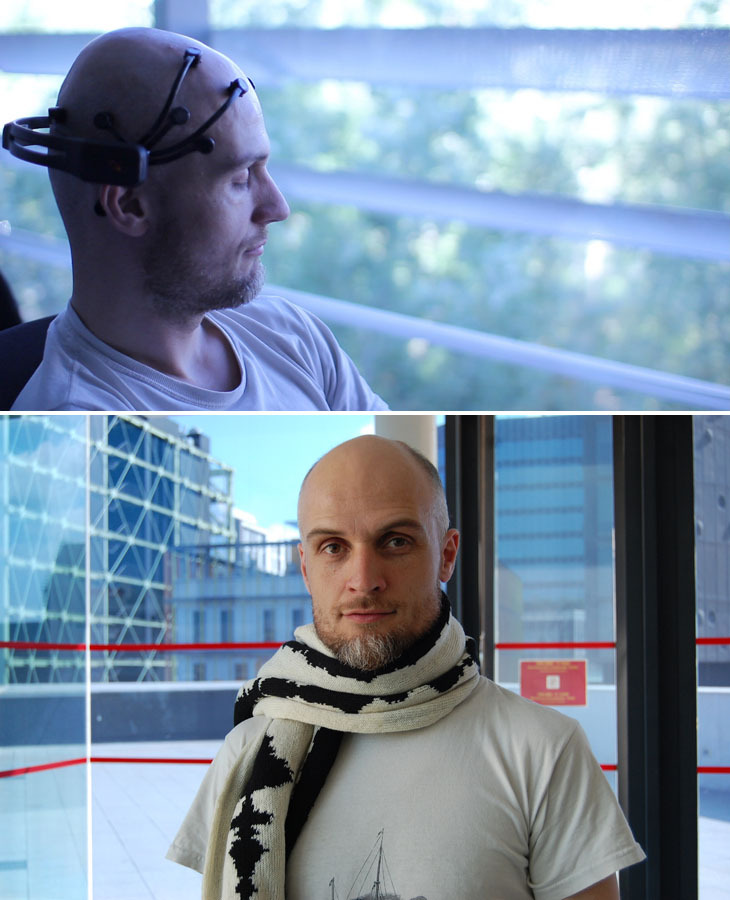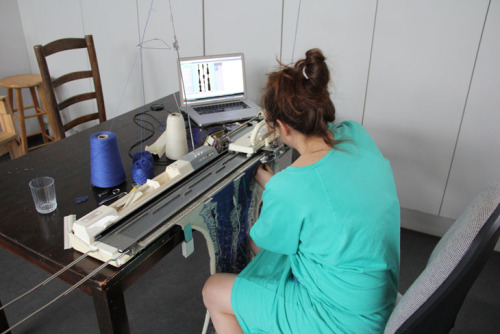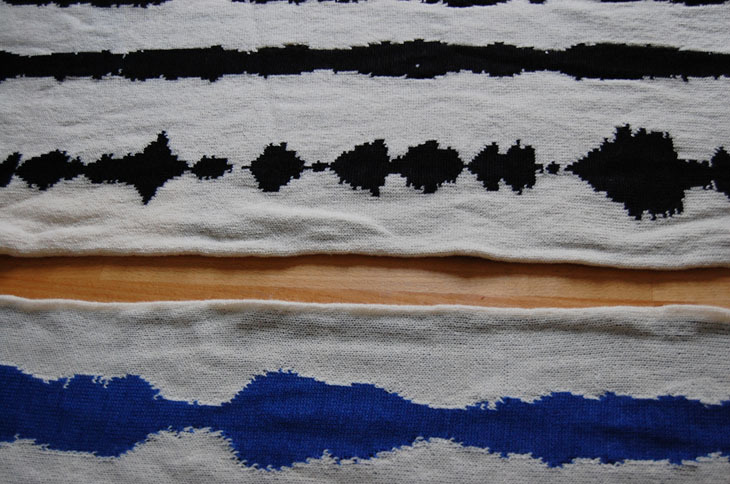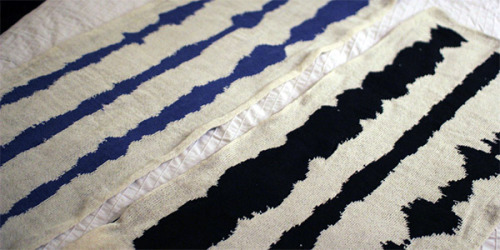"NeuroKnitting" by Varvara Guljajeva and Mar Canet
in collaboration with Music Technology Group researcher Sebastian Mealla
in collaboration with Music Technology Group researcher Sebastian Mealla
Combine Science and Knitting and what do you get? NeuroKnitting! NeuroKnitting lets you wear your brainwaves for all the world to see.
These one-of-a-kind scarves are the work of artistic duo Varvara Guljajeva and Mar Canet, in collaboration with Music Technology Group researcher Sebastian Mealla. Together, they've established a method of plotting brainwave activity into a knitting pattern as a subject listens to Bach's beautiful Goldberg Variations wearing an EEG headset.
The neural data is then printed as a bicolor pattern using Knitic, the team’s open hardware knitting machine. The resulting scarves are wonderfully geeky fashion statements as unique to each wearer as their own fingerprints.
Visit the Knitic website to learn more about this awesome project.
The neural data is then printed as a bicolor pattern using Knitic, the team’s open hardware knitting machine. The resulting scarves are wonderfully geeky fashion statements as unique to each wearer as their own fingerprints.
Visit the Knitic website to learn more about this awesome project.
"The audio was about 10 minutes long and we downsampled each second of the signal coming from the 14 channels of the EEG device. Three main features were measured: relaxation, excitement, and cognitive load. After recording, those features were converted into a knitting pattern. Hence, every stitch of a pattern corresponds to a unique brain state stimulated by the act of listening. It means the user’s affective response to music is captured every second and memorized in the knitted garment pattern."
"NeuroKnitting" from Varvara
"We have plotted brainwave activity into a knitted pattern. Using a wearable, non-invasive EEG headset, we recorded users’ affective states while listening to Bach’s “Goldberg Variations”, concretely the aria and its first seven variations. The audio was about 10 minutes long and we downsampled each second of the signal coming from the 14 channels of the EEG device. Three main features were measured: relaxation, excitement, and cognitive load. After recording, those features were converted into a knitting pattern. Hence, every stitch of a pattern corresponds to a unique brain state stimulated by the act of listening. It means the user’s affective response to music is captured every second and memorised in the knitted garment pattern.
Why have we used music? Because music is one of the most powerful mood inducers, provoking immediate affective reactions that can be deduced by looking at human physiology, as in the case of brain cortical activity. These affective states, that are implicit to every human being, can be measured through EEG technology. By applying this technique, we were able to create unique patterns coming from unique humans traits. It other words, personalized, implicit knitting with context and message.
Concerning the selected music, the first case study uses Bach’s Goldberg Variations as a stimuli for the users. After the statement of an aria at the beginning of the piece, there are thirty variations, from which we took the first seven. The variations do not follow the melody of the aria, but rather use its bass line and chord progression. The EEG correlate of relaxation, engagement and cognitive load was recorded while the users were listening to the musical pieces. This information was later sent to the Knitic framework to create a bicolor pattern for knitting.
The knitted garments picture the listener’s affective and cognitive states during the experiment. It is a way of making tangible the implicit the states of users and visualizing them in an original way as a large and personal data footprint.
Neuro Knitting represents a novel way of personal, generative design and fabrication. An approach that brings together affective computing and digital crafts. And thus, it offers new applications and creative thinking to both areas."




No comments:
Post a Comment